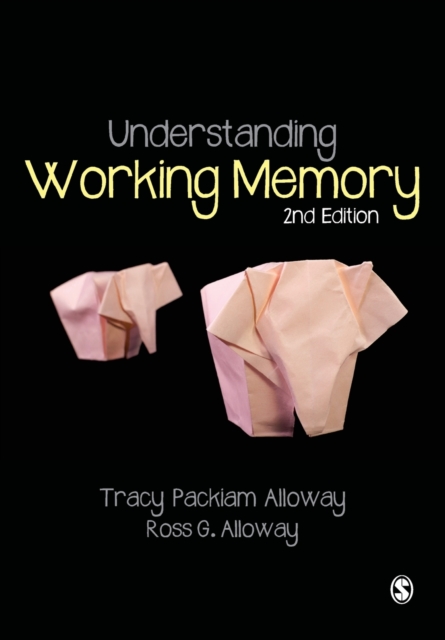
Understanding Working Memory Paperback / softback
by Tracy Packiam Alloway, Ross G Alloway
Paperback / softback
- Information
Description
It is hard to conceive of a classroom activity that does not involve working memory – our ability to work with information.
In fact, it would be impossible for students to learn without working memory.
From following instructions to reading a sentence, from sounding out an unfamiliar word to calculating a math problem, nearly everything a student does in the classroom requires working with information.
Even when a student is asked to do something simple, like take out their science book and open it to page 289, they have to use their working memory. Most children have a working memory that is strong enough to quickly find the book and open to the correct page, but some don’t – approximately 10% in any classroom.
A student who loses focus and often daydreams may fall in this 10%.
A student who isn’t living up to their potential may fall in this 10%.
A student who may seem unmotivated may fall in this 10%.
In the past, many of these students would have languished at the bottom of the class, because their problems seemed insurmountable and a standard remedy like extra tuition didn’t solve them.
But emerging evidence shows that many of these children can improve their performance by focusing on their working memory.
Working memory is a foundational skill in the classroom and when properly supported it can often turn around a struggling student’s prospects. This book will make sure you are able to spot problems early, work with children to improve their working memory and ensure they reach their full potential. How does the book work? Each of the following chapters includes a description of the learning difficulty (WHAT), followed by an inside look into the brain of a student with the disorder (WHERE), their unique working memory profile (WHY), and classroom strategies to support working memory (HOW).
There are two types of strategies: general working memory strategies that can be applied to all students in your class, and specific working memory strategies for each learning difficulty.
The final chapter (Chapter 9) provides the student with tools to empower them along their learning journey. The aim in supporting students with learning difficulties is not just to help them survive in the classroom, but to thrive as well.
The strategies in the book can provide scaffolding and support that will unlock their working memory potential to boost learning.
They are designed to be easily integrated within the classroom setting as a dimension of an inclusive curriculum and used in developing an individualized education program (IEP) for the student. The strategies recommended here can also complement existing programs that support a core deficit, such as a social skills program for a student with autistic spectrum disorder, or behavior modification for those with ADHD.
Each chapter also includes: Try It box: Provides the reader with an opportunity to have a hands-on understanding of the material Science Flash box: Gives the reader a snapshot of current and interesting research related to each chapter Current Debate box: Discusses a controversial issue pertaining to the disorder Tracy Packiam Alloway is an award-winning psychologist based at the University of North Florida Ross Alloway is the CEO of Memosyne Ltd, a company that brings cutting-edge scientific research to parents. Â
Information
-
In Stock - Less than 10 copies availableFree UK DeliveryEstimated delivery 2-3 working days
- Format:Paperback / softback
- Pages:168 pages
- Publisher:Sage Publications Ltd
- Publication Date:10/11/2014
- Category:
- ISBN:9781446274217
Other Formats
- PDF from £22.94
- Hardback from £79.62
- EPUB from £22.94
Information
-
In Stock - Less than 10 copies availableFree UK DeliveryEstimated delivery 2-3 working days
- Format:Paperback / softback
- Pages:168 pages
- Publisher:Sage Publications Ltd
- Publication Date:10/11/2014
- Category:
- ISBN:9781446274217